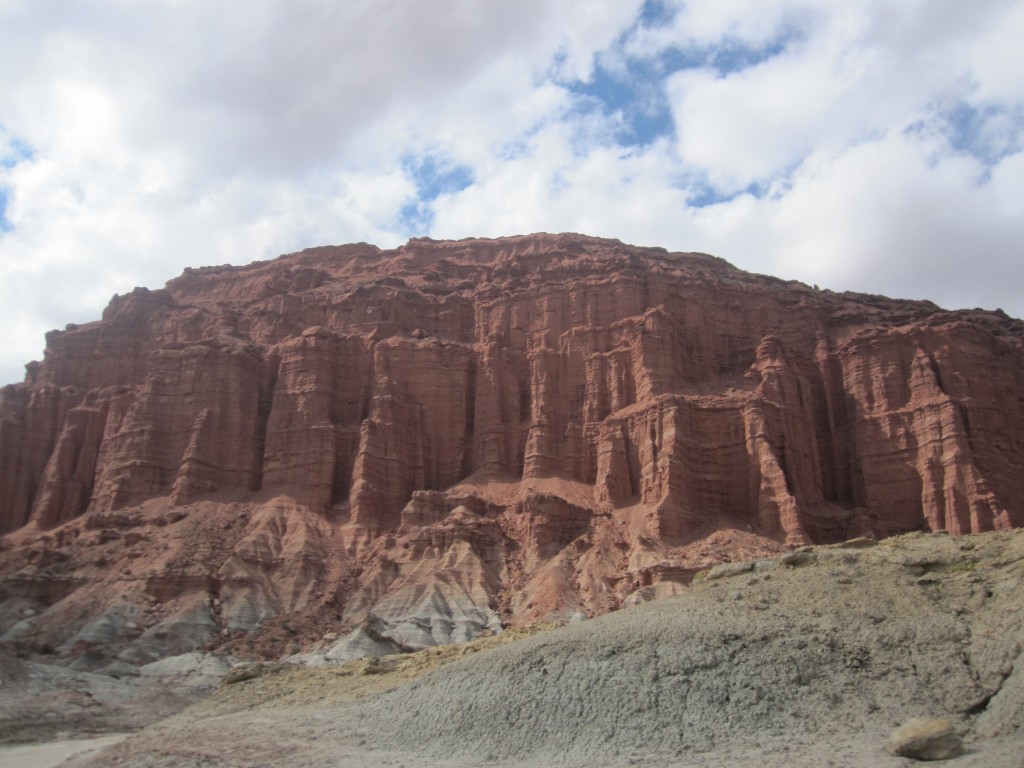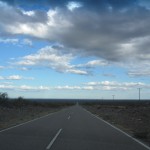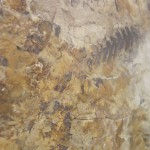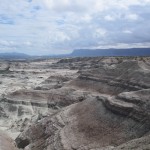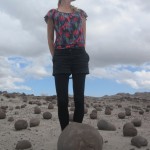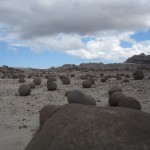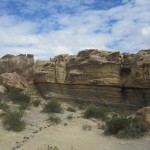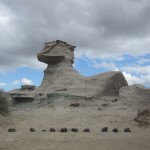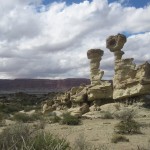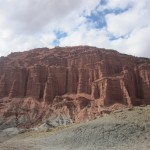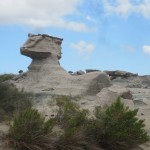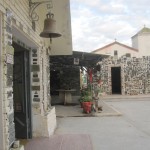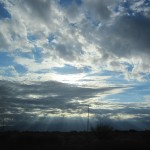While Laura was off in Santiago, Karoline and I stopped off in the small town of San Juan, our jumping off point to the Valle de la Luna. It was a long jump for sure, at 3 hours each way, but the spectacle was well worth it!
The valley is in a national park, home to richly coloured rock which has been eroded over the years by rivers and the wind into as many different shapes as your imagination can conjure. It’s quite impressive!
On the way there, we got a sense of quite how much water flows down from the Andes during the rainy season to sculpt the rock. The road was more of a rollercoaster than your conventional tarmac strip, with it curving downwards and then back up in a half-pipe style every couple of hundred metres in order to let the floodwater past. The route is cut off during the wetter months of the year.
As you drive around the park, the different ages of rock are visible in their coloration, with distant red cliffs some 190 million years old and younger grey stone in front. Our guide pointed out the various formations which occasionally needed a bit of imagination to see; check them out in the gallery below. We were also shown the iconic iron balls that you see on any photo of this area. We were under the impression they were going to be huge, so it was somewhat disappointing to find them about 20cm high! Formed naturally from iron in the sands, they’re certainly distinctive and gave us a good chance to play with perspective on our cameras.
On our way home, we stopped at the shrine of Difunta Correa, who according to legend wandered the desert during the civil war of the 1840s to follow her soldier husband. Travelling with her baby, she died of thirst at a roadside, but (as the miracle goes) her son was found alive days later, suckling from his mother’s breast which had kept him alive. Despite being thoroughly rejected by the Catholic church, she’s worshipped by many as a bringer of hope in difficult times. Curiously, she’s also highly venerated by truckers, in small shrines at the roadside across the country, where devotees leave bottles of water to quench her thirst.

It was a very strange place. Firstly, the scale – despite being in the middle of nowhere, it is hugely popular, with up to 200,000 visitors over holiday periods. The site of her death is marked by some 17 chapels, and a village has sprung up around them, with a school, restaurants, and even hotels. In each chapel is a graphic depiction of the dead woman, and every available inch of space is lined with offerings from those wishing to improve their luck. One chapel is filled with models of trucks, buses and cars; another with medals and sports kit of different teams across the country. We were surprised to hear that every year, the whole place is cleared of offerings – and every year hundreds of thousands more are put in their place.
Perhaps what is most surprising of all is to see such conviction in this icon, contravening the Vatican in what is such a strongly religious country. Across Asia, we saw icon worship in many forms through religion, and I guess this is much the same – but I hadn’t expected to find large numbers of Catholics worshipping someone who is not officially considered a Saint. Despite all the authority of the church, it makes one think how fickle religious devotion can be – and also how powerful it is too.
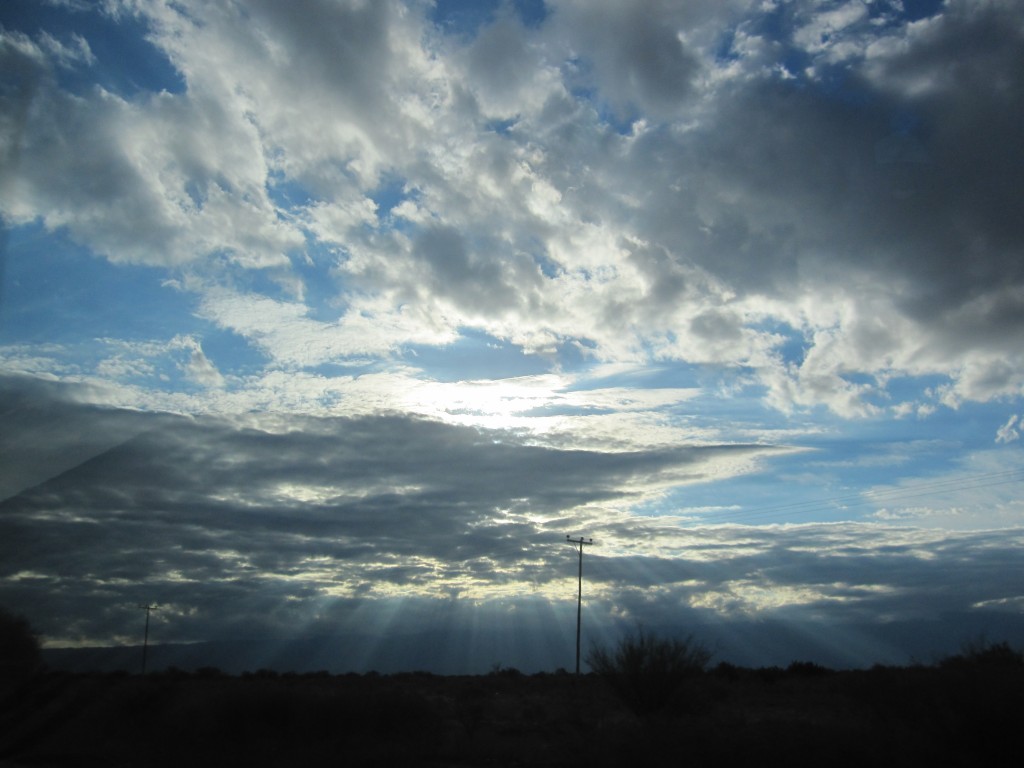
As we drove back to San Juan in the late afternoon, bright shards of sunlight burst through the clouds over the darkening landscape, casting an appropriate sense of awe on both the natural and human phenomena around us.
Simon
- You can see the bumps in the road ahead from all the rivers
- A fossil
- A lunar landscape
- Karoline and the iron balls
- Some of them have split open, revealing the solid iron core
- Not as big as they look
- The worm
- The sphynx
- Our guide, and the mushroom rock
- The submarine
- The Cathedral
- Another mystery shape
- The sphynx
- Plaques from donars on the outside of a chapel
- At the shrine
- Inside a chapel, with a sculpture of mother and child
- Awe over the landscape

